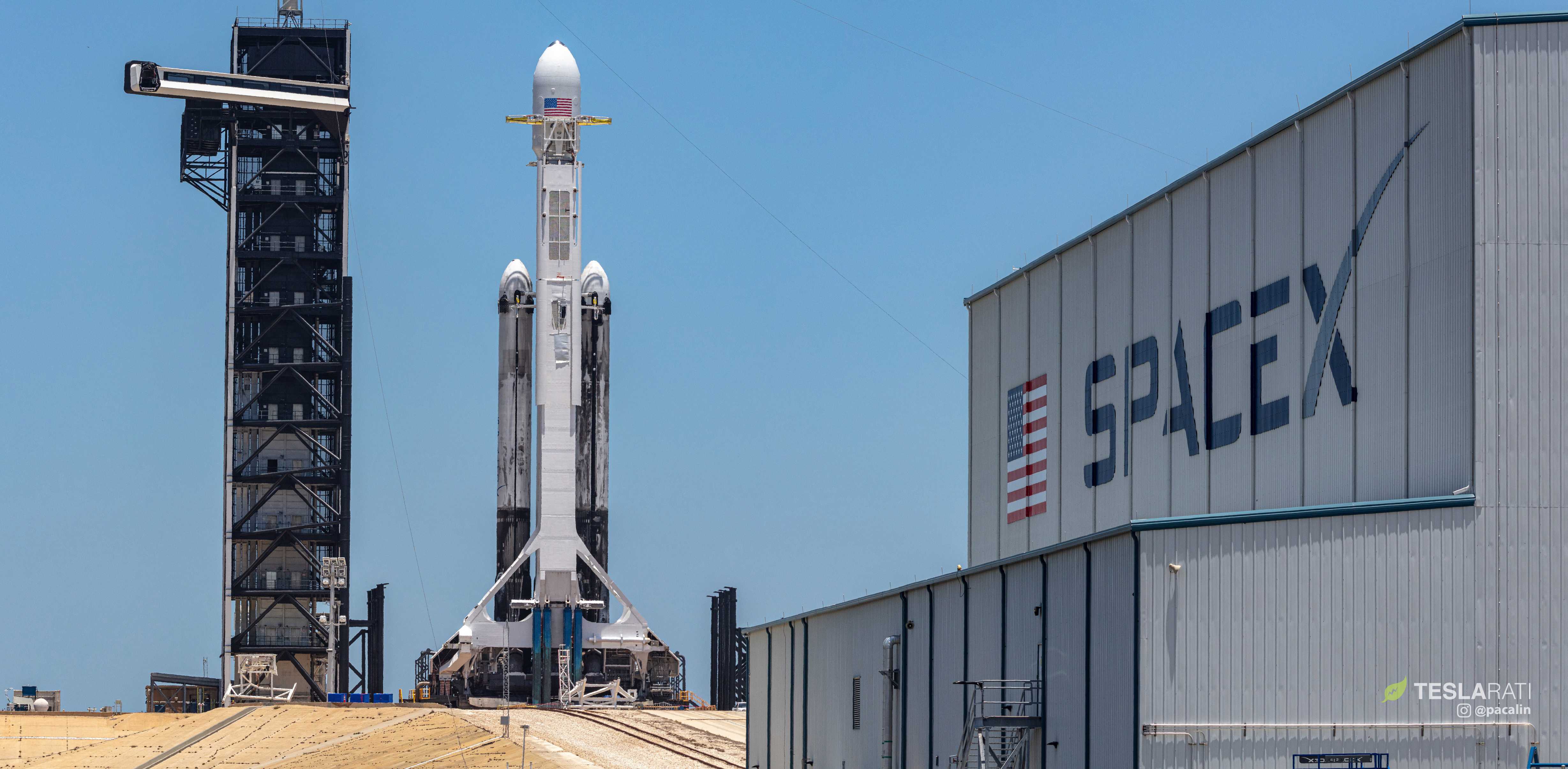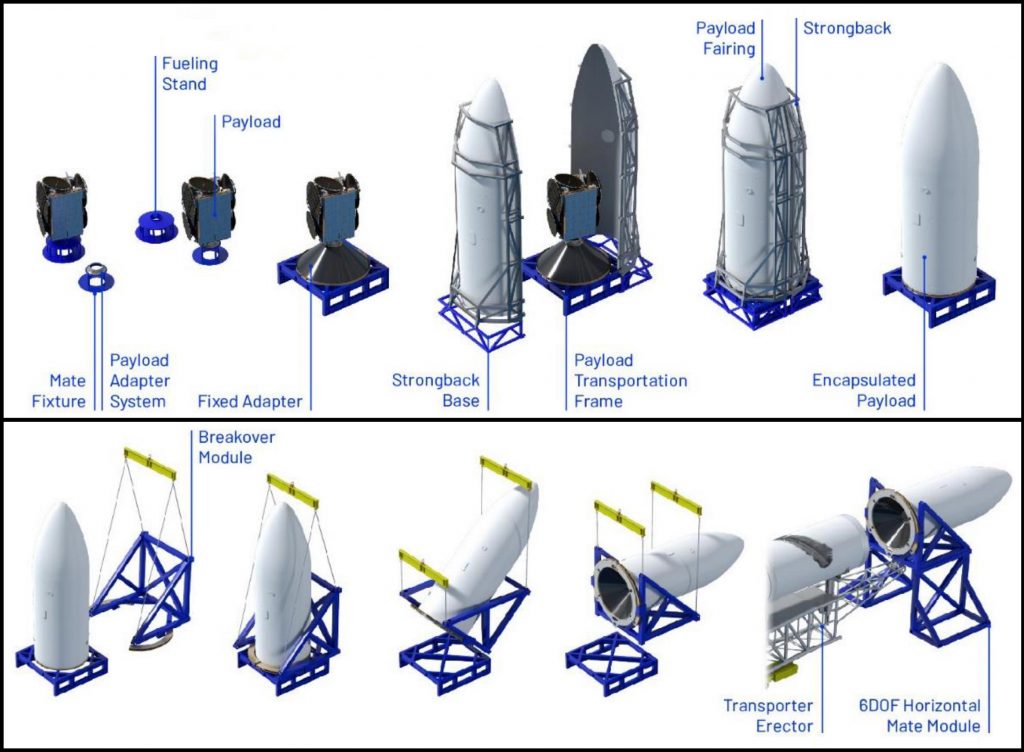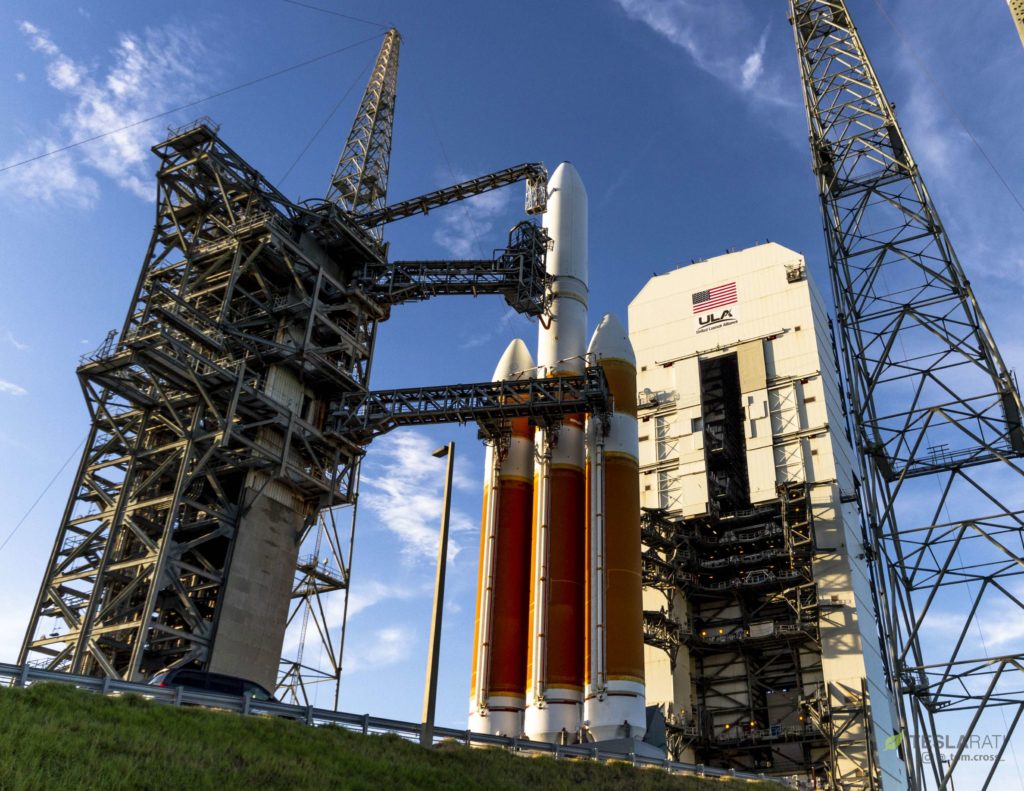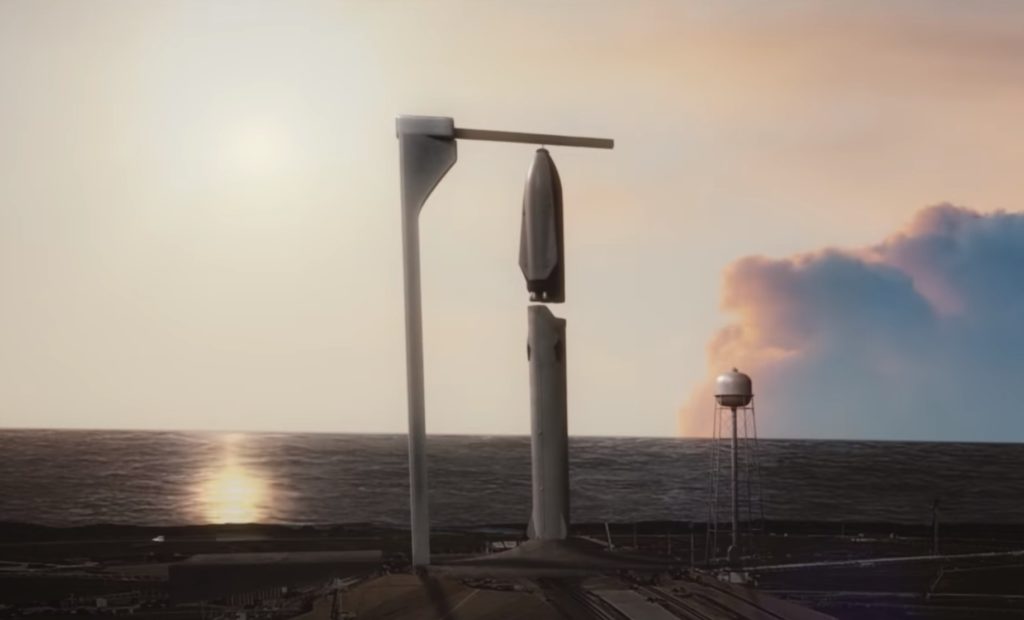

News
SpaceX's Falcon rockets might need a giant tower on wheels for US military launches
SpaceX reportedly plans to build a massive mobile gantry – effectively a tower on wheels – at one of its two Florida launch pads, a bid to meet obscure military launch criteria needed to secure highly lucrative Falcon 9 and Falcon Heavy launch contracts from the US government.
Although this is not the first time that SpaceX and vertical integration have been thrown around in the same sentence, it is the first time that the company is reportedly close to actually finalizing its plans along those lines and constructing a real solution at one or more of its three orbital-class launch pads.
Throughout the entirety of its active launch operations, SpaceX has relied exclusively on horizontal integration for its Falcon 1, 9, and Heavy rockets and the satellites they launch. CEO Elon Musk and other executives have maintained a consistent rationale for that preference over the years: ensuring that rockets and payloads can be horizontally integrated is the best possible solution so long as SpaceX’s primary motivation is improving access to space and lowering the cost of launch. As such, SpaceX has one and only one major motivation to jerry-rig a vertical integration solution for its Falcon family of rockets: necessity by way of arcane US military launch contract requirements.
Spaceflight Now broke the latest news first on January 3rd, 2020, revealing that SpaceX was at long last taking a substantial step towards actually building its own vertical integration infrastructure at Kennedy Space Center (KSC) Launch Complex 39A – a step that was long anticipated but has taken years to transpire into anything concrete. The gist is this: for a variety of seemingly shoehorned and far-from-obvious reasons, the secretive, ultra-expensive spy satellites that contractors like Lockheed Martin and Boeing build for the US Air Force (USAF) and the National Reconnaissance Office (NRO) builds itself are designed in such a way that they apparently cannot be flipped horizontally in a rocket’s payload fairing.

Identical to the process depicted above for Blue Origin’s in-development New Glenn rocket, up to now, SpaceX has encapsulated all satellite payloads vertically, sealed the payload fairing, rotated that integrated fairing and payload, and then attached that assembly to horizontal Falcon 9 and Falcon Heavy rockets. The rocket is then transported to the launch pad on a transporter erector (T/E), which – as the name suggests – raises the rocket and payload vertical before propellant loading and launch.
For certain USAF and NRO launch contracts, breakover (horizontal flip) is unacceptable and their preference is that the launch vehicle be brought vertical before the payload – also still vertical – is stacked on top. While it sounds simple in principle (i.e. “Just stick a crane out by the pad!”), vertical payload integration is exceptionally tedious unless you already have the infrastructure in place. Competitor United Launch Alliance (ULA), for example, already has that infrastructure – having held a decade-long monopoly over US military launches that only ended 5-7 years ago, depending on how it’s measured.
Both ULA’s Atlas V, Delta IV, and soon-to-be Vulcan Centaur rockets and the infrastructure used to launch them have all been designed around vertical payload integration – essentially requiring massive, expensive, and complicated buildings-on-wheels at each launch facility.

Per Spaceflight Now, SpaceX has plans to build a similar mobile tower at Pad 39A, currently dedicated Falcon 9/Crew Dragon missions for NASA and the occasional Falcon Heavy launch. That tower will ultimately roll up to Falcon 9 or Heavy rockets on the pad, fully covering the vehicles and giving technicians an array of work platforms and tools to support vertical payload integration, among other uses. SFN says that the mobile tower will be even taller than the existing Fixed Service Structure (FSS) tower at Pad 39A, measuring some 30 stories (100m/330ft) tall.
In line with a recent FSS redesign that saw that existing tower modified for Crew Dragon and outfitted with semi-transparent black glass or plastic and a black-and-white color scheme, the new mobile tower will apparently be built with a similar design language.

Ultimately, all of SpaceX’s plans for Starship – a massive next-generation, fully-reusable rocket – have relied on some form of vertical integration for Super Heavy boosters, Starships, and tankers. In a best-case scenario, all of those vehicles may one day land in reach of a giant crane situated at the launch pad, allowing SpaceX to lift them back to the pad and install ships and tankers on Super Heavy boosters just hours (maybe even minutes) after touchdown – truly rapid reuse.
For now, it’s unclear when exactly SpaceX wants to start cutting metal for its new Falcon 9/Heavy gantry, but it’s safe to say the company will move fast as usual once it begins.
Check out Teslarati’s Marketplace! We offer Tesla accessories, including for the Tesla Cybertruck and Tesla Model 3.
Elon Musk
Why Tesla’s Q3 could be one of its biggest quarters in history
Tesla could stand to benefit from the removal of the $7,500 EV tax credit at the end of Q3.

Tesla has gotten off to a slow start in 2025, as the first half of the year has not been one to remember from a delivery perspective.
However, Q3 could end up being one of the best the company has had in history, with the United States potentially being a major contributor to what might reverse a slow start to the year.
Earlier today, the United States’ House of Representatives officially passed President Trump’s “Big Beautiful Bill,” after it made its way through the Senate earlier this week. The bill will head to President Trump, as he looks to sign it before his July 4 deadline.
The Bill will effectively bring closure to the $7,500 EV tax credit, which will end on September 30, 2025. This means, over the next three months in the United States, those who are looking to buy an EV will have their last chance to take advantage of the credit. EVs will then be, for most people, $7,500 more expensive, in essence.
The tax credit is available to any single filer who makes under $150,000 per year, $225,000 a year to a head of household, and $300,000 to couples filing jointly.
Ending the tax credit was expected with the Trump administration, as his policies have leaned significantly toward reliance on fossil fuels, ending what he calls an “EV mandate.” He has used this phrase several times in disagreements with Tesla CEO Elon Musk.
Nevertheless, those who have been on the fence about buying a Tesla, or any EV, for that matter, will have some decisions to make in the next three months. While all companies will stand to benefit from this time crunch, Tesla could be the true winner because of its sheer volume.
If things are done correctly, meaning if Tesla can also offer incentives like 0% APR, special pricing on leasing or financing, or other advantages (like free Red, White, and Blue for a short period of time in celebration of Independence Day), it could see some real volume in sales this quarter.
You can now buy a Tesla in Red, White, and Blue for free until July 14 https://t.co/iAwhaRFOH0
— TESLARATI (@Teslarati) July 3, 2025
Tesla is just a shade under 721,000 deliveries for the year, so it’s on pace for roughly 1.4 million for 2025. This would be a decrease from the 1.8 million cars it delivered in each of the last two years. Traditionally, the second half of the year has produced Tesla’s strongest quarters. Its top three quarters in terms of deliveries are Q4 2024 with 495,570 vehicles, Q4 2023 with 484,507 vehicles, and Q3 2024 with 462,890 vehicles.
Elon Musk
Tesla Full Self-Driving testing continues European expansion: here’s where
Tesla has launched Full Self-Driving testing in a fifth European country ahead of its launch.

Tesla Full Self-Driving is being tested in several countries across Europe as the company prepares to launch its driver assistance suite on the continent.
The company is still working through the regulatory hurdles with the European Union. They are plentiful and difficult to navigate, but Tesla is still making progress as its testing of FSD continues to expand.
Today, it officially began testing in a new country, as more regions open their doors to Tesla. Many owners and potential customers in Europe are awaiting its launch.
On Thursday, Tesla officially confirmed that Full Self-Driving testing is underway in Spain, as the company shared an extensive video of a trip through the streets of Madrid:
Como pez en el agua …
FSD Supervised testing in Madrid, Spain
Pending regulatory approval pic.twitter.com/txTgoWseuA
— Tesla Europe & Middle East (@teslaeurope) July 3, 2025
The launch of Full Self-Driving testing in Spain marks the fifth country in which Tesla has started assessing the suite’s performance in the European market.
Across the past several months, Tesla has been expanding the scope of countries where Full Self-Driving is being tested. It has already made it to Italy, France, the Netherlands, and Germany previously.
Tesla has already filed applications to have Full Self-Driving (Supervised) launched across the European Union, but CEO Elon Musk has indicated that this particular step has been the delay in the official launch of the suite thus far.
In mid-June, Musk revealed the frustrations Tesla has felt during its efforts to launch its Full Self-Driving (Supervised) suite in Europe, stating that the holdup can be attributed to authorities in various countries, as well as the EU as a whole:
Tesla Full Self-Driving’s European launch frustrations revealed by Elon Musk
“Waiting for Dutch authorities and then the EU to approve. Very frustrating and hurts the safety of people in Europe, as driving with advanced Autopilot on results in four times fewer injuries! Please ask your governing authorities to accelerate making Tesla safer in Europe.”
Waiting for Dutch authorities and then the EU to approve.
Very frustrating and hurts the safety of people in Europe, as driving with advanced Autopilot on results in four times fewer injuries!
Please ask your governing authorities to accelerate making Tesla safer in Europe. https://t.co/QIYCXhhaQp
— Elon Musk (@elonmusk) June 11, 2025
Tesla said last year that it planned to launch Full Self-Driving in Europe in 2025.
Elon Musk
xAI’s Memphis data center receives air permit despite community criticism
xAI welcomed the development in a post on its official xAI Memphis account on X.

Elon Musk’s artificial intelligence startup xAI has secured an air permit from Memphis health officials for its data center project, despite critics’ opposition and pending legal action. The Shelby County Health Department approved the permit this week, allowing xAI to operate 15 mobile gas turbines at its facility.
Air permit granted
The air permit comes after months of protests from Memphis residents and environmental justice advocates, who alleged that xAI violated the Clean Air Act by operating gas turbines without prior approval, as per a report from WIRED.
The Southern Environmental Law Center (SELC) and the NAACP has claimed that xAI installed dozens of gas turbines at its new data campus without acquiring the mandatory Prevention of Significant Deterioration (PSD) permit required for large-scale emission sources.
Local officials previously stated the turbines were considered “temporary” and thus not subject to stricter permitting. xAI applied for an air permit in January 2025, and in June, Memphis Mayor Paul Young acknowledged that the company was operating 21 turbines. SELC, however, has claimed that aerial footage shows the number may be as high as 35.
Critics are not giving up
Civil rights groups have stated that they intend to move forward with legal action. “xAI’s decision to install and operate dozens of polluting gas turbines without any permits or public oversight is a clear violation of the Clean Air Act,” said Patrick Anderson, senior attorney at SELC.
“Over the last year, these turbines have pumped out pollution that threatens the health of Memphis families. This notice paves the way for a lawsuit that can hold xAI accountable for its unlawful refusal to get permits for its gas turbines,” he added.
Sharon Wilson, a certified optical gas imaging thermographer, also described the emissions cloud in Memphis as notable. “I expected to see the typical power plant type of pollution that I see. What I saw was way worse than what I expected,” she said.
-

 Elon Musk3 days ago
Elon Musk3 days agoTesla investors will be shocked by Jim Cramer’s latest assessment
-

 News1 week ago
News1 week agoTesla Robotaxi’s biggest challenge seems to be this one thing
-

 News2 weeks ago
News2 weeks agoTexas lawmakers urge Tesla to delay Austin robotaxi launch to September
-

 Elon Musk2 weeks ago
Elon Musk2 weeks agoFirst Look at Tesla’s Robotaxi App: features, design, and more
-

 Elon Musk2 weeks ago
Elon Musk2 weeks agoxAI’s Grok 3 partners with Oracle Cloud for corporate AI innovation
-

 News2 weeks ago
News2 weeks agoSpaceX and Elon Musk share insights on Starship Ship 36’s RUD
-

 News2 weeks ago
News2 weeks agoWatch Tesla’s first driverless public Robotaxi rides in Texas
-

 News2 weeks ago
News2 weeks agoTesla has started rolling out initial round of Robotaxi invites

















